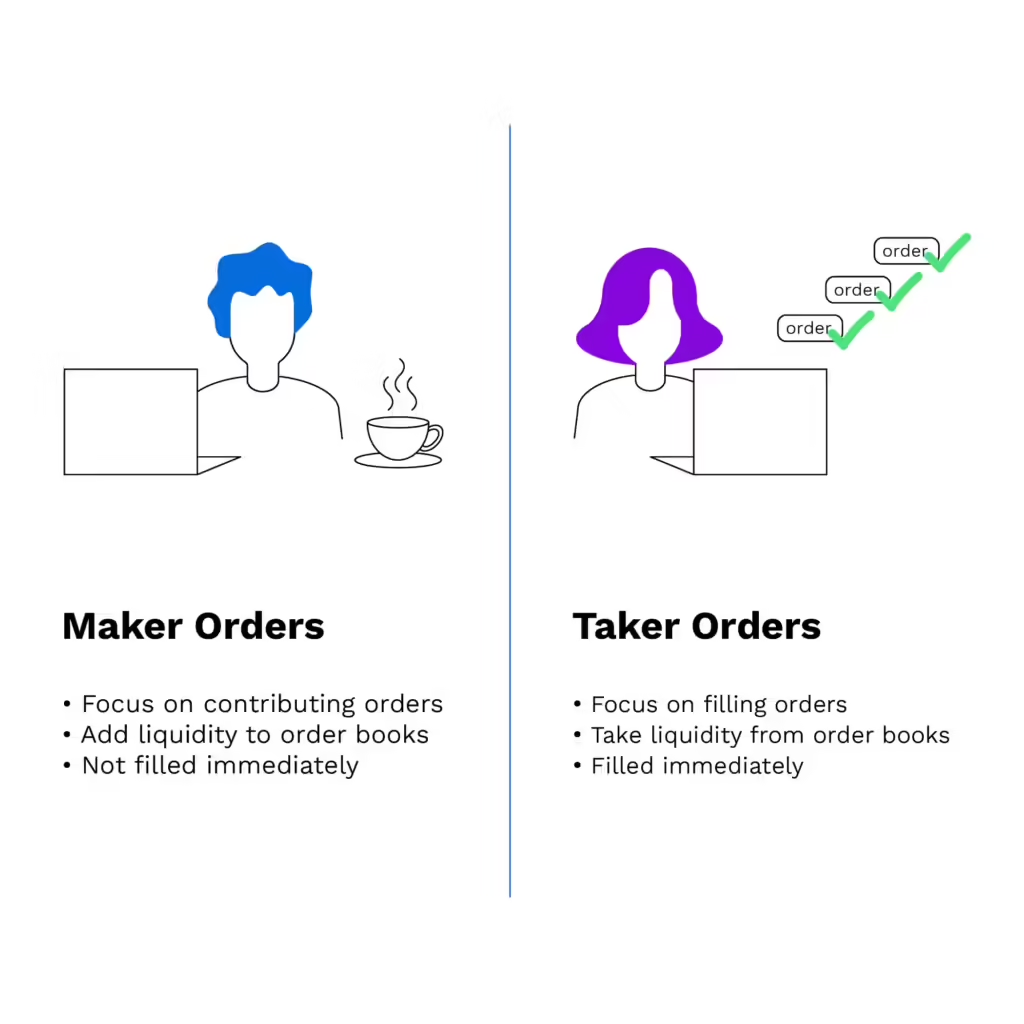How Much Do Crypto Exchanges Make In A Day [2024]
Cryptocurrency exchanges are pivotal to the functioning of the digital finance realm, acting as the engine rooms where cryptocurrencies are bought, sold, and traded.
These platforms provide the tools necessary to participate in the digital economy, whether you’re a trader or a seasoned investor.
Each transaction on these exchanges is central to your experience and a fundamental part of how these platforms generate income.
The revenue model of cryptocurrency exchanges is multifaceted, offering insight into the operational costs of running such complex digital marketplaces.
As you engage in trading, you contribute to the primary source of income for these exchanges: trading fees. These fees apply to each trade and vary from platform to platform, forming a consistent revenue stream for the exchange.
Beyond the evident trading fees, exchanges diversify their income through several other channels, such as withdrawal and deposit fees, listing fees for new cryptocurrencies, and services like margin trading.
Understanding these revenue streams gives you deeper insight into the economic web of the crypto world and clarifies the costs associated with your digital asset management.
How Much Do Crypto Exchanges Make Per Day/Month/Year

Crypto exchanges are digital marketplaces where you can trade cryptocurrencies. They function as intermediaries between buyers and sellers, providing a platform for you to exchange digital assets.
The operation of these exchanges is grounded in providing user access, security measures, and liquidity to facilitate smooth and speedy transactions.
How Crypto Exchanges Operate:
- User Accessibility: You create an account, verify your identity, and can then deposit fiat money or cryptocurrencies to start trading.
- Security: Exchanges implement robust security protocols to protect your assets and personal data.
- Trading Pairs: You trade cryptocurrencies in pairs, like BTC/USD or ETH/BTC.
- Liquidity: A high liquidity level means that you can execute large trades without significantly affecting the market price.
Revenue from Trading Fees:
One primary revenue stream for crypto exchanges is trading fees. Here’s here’s work:
Transaction-Based Fees: You pay a fee for each buy or sell transaction you execute.
| Trade Volume | Fee Percentage |
| Less than 1 BTC | 0.25% |
| More than 1 BTC | 0.1% |
Maker-Taker Fees: If you create a new order that provides liquidity (a maker), you usually pay lower fees than taking an order off the book (a taker).

Exchanges may have different fee structures, but the essence is that they charge you for the service of trading digital assets.
Some exchanges may also decrease the percentage based on your trade volume or offer lower fees to holders of the exchange. Remember, these fees are integral to an exchange to provide consistent and reliable service.
Revenue Models Of Crypto Exchanges
Crypto exchanges generate revenue through various means, each designed to provide value for their services and maintain their platforms. Here’s how these financial structures contribute to their earnings.
Trading Fees
Each trade you make on a cryptocurrency exchange incurs a fee. These trading fees are typically calculated as a percentage of the trade volume.
Some exchanges use a tiered fee structure, where your trading volume affects the fee percentage – the more you trade, the lower the fees. High trading volumes on these platforms significantly contribute to their revenue.
Withdrawal Fees
You usually pay a withdrawal fee when you withdraw your funds from an exchange. This fee varies depending on factors like cryptocurrency and network congestion. This cost covers the transaction process and adds to the exchange’s Fees.
Exchanges charge listing fees to project teams that want their cryptocurrency available for trading to their users. These fees can be substantial, as a listing on a popular exchange often leads to increased visibility and potentially higher trading volumes for the project.
Crypto Loans
Crypto exchanges offer loans where you can borrow funds for trading or other purposes. The exchange profits from the interest you pay on these loans. Loan services also help keep funds on the platform, increasing liquidity and the exchange’s volume.
Affiliate Or Referral Programs
Finally, exchanges use affiliate or referral programs to attract new users. You receive a reward, often in the form of reduced fees or a share of the fees paid by the people you refer. In turn, the exchange benefits from the increase in users and trading volume, thus directly boosting their earnings.
Profitability Of Crypto Exchanges: How Much Money Do Crypto Exchanges Make?

When considering crypto exchange profitability, you’re a complex system influenced by various revenue streams.
These platforms generally profit from transaction fees, listing fees for new cryptocurrencies, and other services such as staking or custodial storage.
Daily Profits:
- Top crypto exchanges can handle a daily trading volume that extends into billions of dollars. A small transaction fee, typically 0.1% to 0.5%, can amount to significant daily earnings.
- Promotional periods, such as zero-fee spot trading, may temporarily impact profits but are usually offset by increased volume and customer acquisition.
Factors Influencing Profitability:
- Volume: Your trading frequency affects the exchange through tiered fee structures, generally offering lower fees for higher trading volumes.
- Market Fluctuations: Volatility in the market can increase trading activity, often leading to spikes in profits for the exchanges.
- Services Offered: Additional services like derivatives trading, margin trading, and lending also contribute to an exchange.
- Operational Efficiency: Efficient operations, including advanced security measures, help retain customer trust and, hence, maintain revenue flow.
Remember, the house often benefits from market activity. While fees are visible as the main profit generator, exchanges prosper from other more obscure methods, such as the interest earned on your deposited funds.
The intricate combination of these factors crafts the overall profitability landscape for crypto exchanges.
Case Study: Binance

As a prominent player in the cryptocurrency space, Binance has established itself as one of the largest exchanges in terms of trading volume. In 2022, despite market fluctuations, Binance reported revenue of $12 billion, though this marked a 40% decline compared to the earnings in the previous year.
Business Model and Revenue Streams:
- Trading Fees: Your trades on Binance incur a fee that contributes significantly to their revenue. These fees vary based on your trading volume and BNB balance.
- Withdrawal Fees: Every time you withdraw funds, you’re a fee that also feeds into Binance’sBinance’sListing Fees: New tokens pay a fee to get listed on the exchange, creating another revenue stream.
- Interest on Loans: Binance provides crypto loans for which they collect interest.
Growth Indicators:
- Trading Volumes: Your use of the trading platform is reflected in the daily trading volumes, critical metrics for Binance’s profitability.
- User Accounts: The growth in user accounts directly impacts Binance’sBinance’sine. More users typically mean more transactions and fees collected.
By understanding these aspects of Binance’sBinance’sns, you can appreciate the nuanced ways that large cryptocurrency exchanges like Binance generate revenue.
Binance’s ability to maintain significant earnings, even in the face of market downturns, highlights the robust nature of its business model.
Frequently Asked Questions
In this section, you will find specific information related to the financial aspects of cryptocurrency exchanges, from their earnings to the costs associated with setting them up and the revenue mechanisms of decentralized platforms.
What are the average daily earnings for a cryptocurrency exchange?
Cryptocurrency exchanges primarily generate revenue through transaction fees. The average daily earnings can vary greatly, with top exchanges potentially earning millions of dollars per day from fees, while smaller platforms might earn much less. These earnings fluctuate with trading volume and market activity.
What are the estimated costs of creating a cryptocurrency exchange?
Starting a cryptocurrency exchange involves costs like technology development, security measures, regulatory compliance, and marketing. Initial expenses can range from a few hundred thousand to several million dollars, depending on the scale and features of the platform you intend to build.
How do decentralized crypto exchanges make money?
Decentralized crypto exchanges (DEXs) make money by charging trading fees, typically lower than centralized exchanges. These fees are used to incentivize liquidity providers and maintain the network. Some DEXs also implement additional features like token staking and yield farming that can generate income.
Conclusion
Crypto exchanges engage in various revenue-generating activities to ensure their profitability. They implement transaction fees that may follow a tiered structure, where your trading volume affects the fee percentage you pay.
Exchanges might charge substantial fees when listing new coins, capitalizing on the demand for access to a broader trading market.
You should know that depositing your cryptocurrency as collateral for services like loans may incur interest expenses.
Additionally, exchanges benefit from spreads—the difference between the bid and the asking price—which, while typically small, can accumulate to represent a significant source of income due to the volume of trades.
Risks and Rewards:
- Trading Fees: Vary by volume; affect profitability
- Loan Services: Interest rates apply
- Listing Fees: Can be significant; impact coin access
- Spread Earnings: Small per transaction but substantial in aggregate
While the potential rewards of trading cryptocurrencies are compelling, you must also weigh the risks. The market’s markets mean that losses can be equally significant while there is an opportunity for high returns.
Your trading strategy, including the exchanges you choose, is pivotal in managing these risks.
Your understanding of how exchanges make money can inform your trading decisions. By considering the impact of fees and the interplay between market movements and profitability, you can better navigate the complex landscape of cryptocurrency trading.







